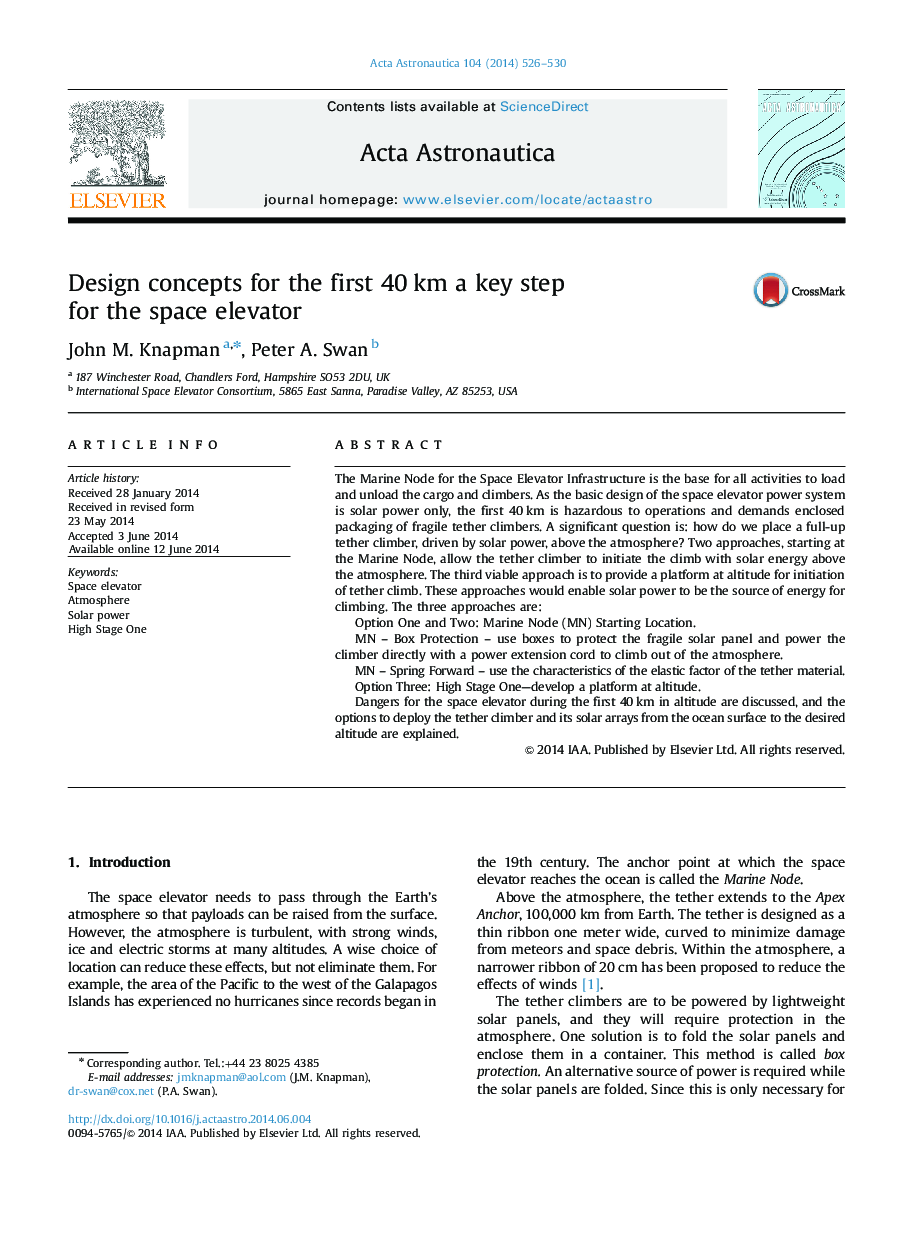| کد مقاله | کد نشریه | سال انتشار | مقاله انگلیسی | نسخه تمام متن |
|---|---|---|---|---|
| 1714568 | 1013331 | 2014 | 5 صفحه PDF | دانلود رایگان |

• Solar power is the preferred option for tether climbers on the space elevator.
• The solar panels need protection from Earth’s turbulent atmosphere up to 40 km altitude.
• Three options are presented: box protection, spring forward and High Stage One.
• High Stage One is based on the Lofstrom Loop.
The Marine Node for the Space Elevator Infrastructure is the base for all activities to load and unload the cargo and climbers. As the basic design of the space elevator power system is solar power only, the first 40 km is hazardous to operations and demands enclosed packaging of fragile tether climbers. A significant question is: how do we place a full-up tether climber, driven by solar power, above the atmosphere? Two approaches, starting at the Marine Node, allow the tether climber to initiate the climb with solar energy above the atmosphere. The third viable approach is to provide a platform at altitude for initiation of tether climb. These approaches would enable solar power to be the source of energy for climbing. The three approaches are:Option One and Two: Marine Node (MN) Starting Location.MN – Box Protection – use boxes to protect the fragile solar panel and power the climber directly with a power extension cord to climb out of the atmosphere.MN – Spring Forward – use the characteristics of the elastic factor of the tether material.Option Three: High Stage One—develop a platform at altitude.Dangers for the space elevator during the first 40 km in altitude are discussed, and the options to deploy the tether climber and its solar arrays from the ocean surface to the desired altitude are explained.
Journal: Acta Astronautica - Volume 104, Issue 2, November–December 2014, Pages 526–530